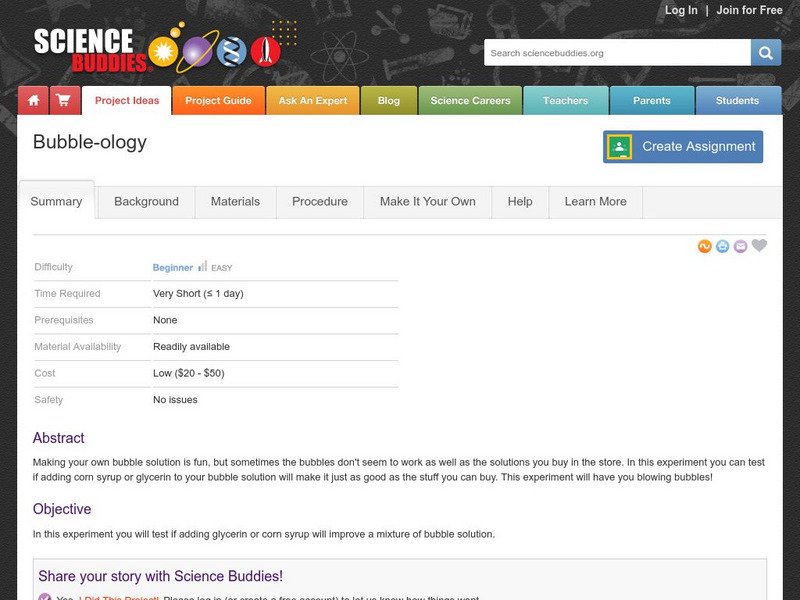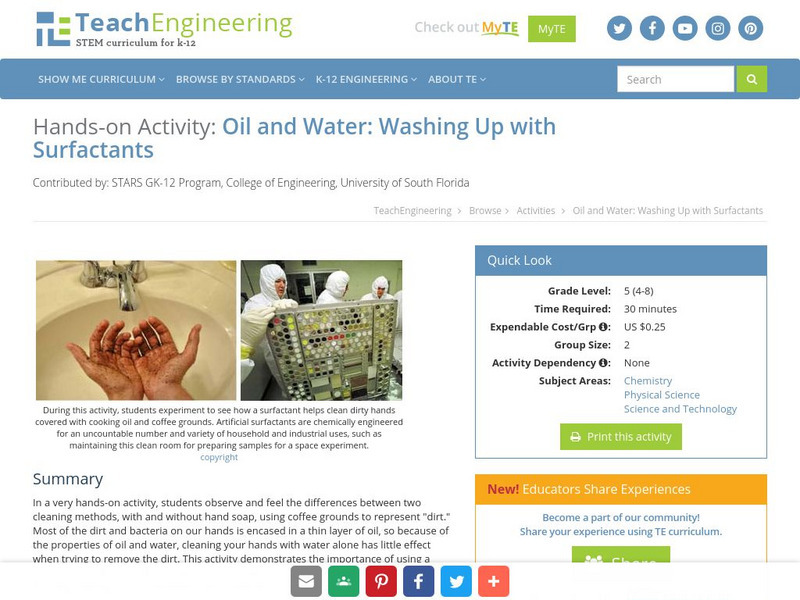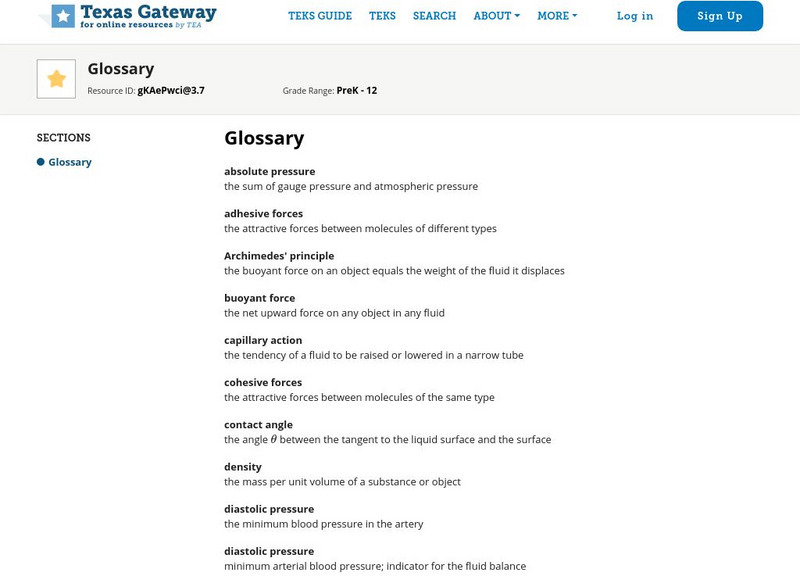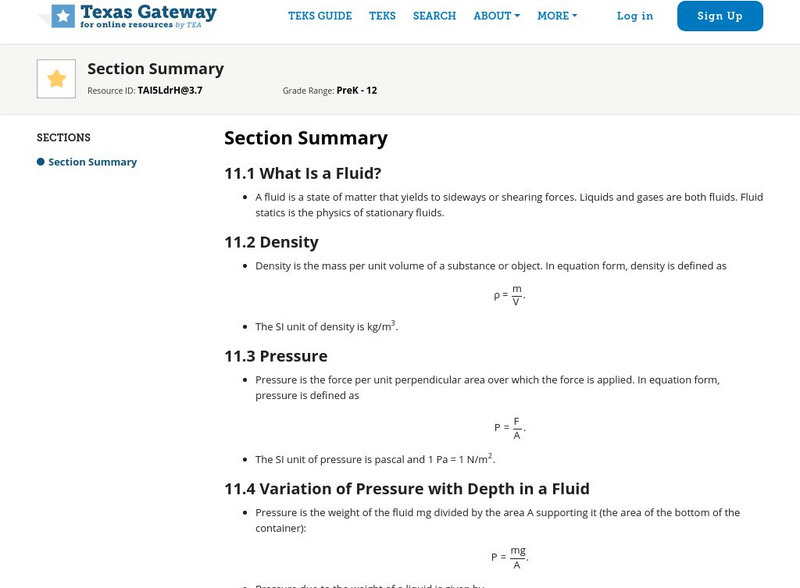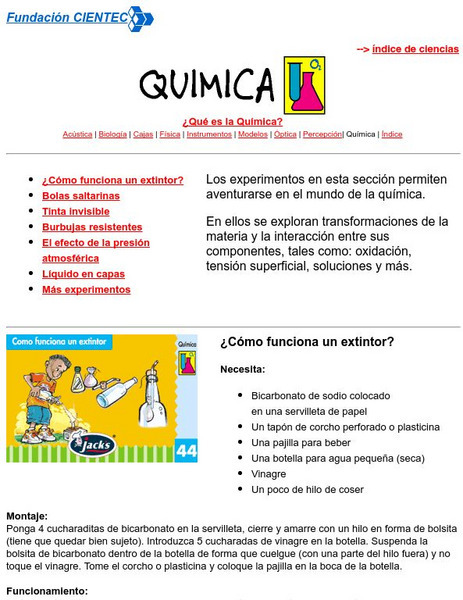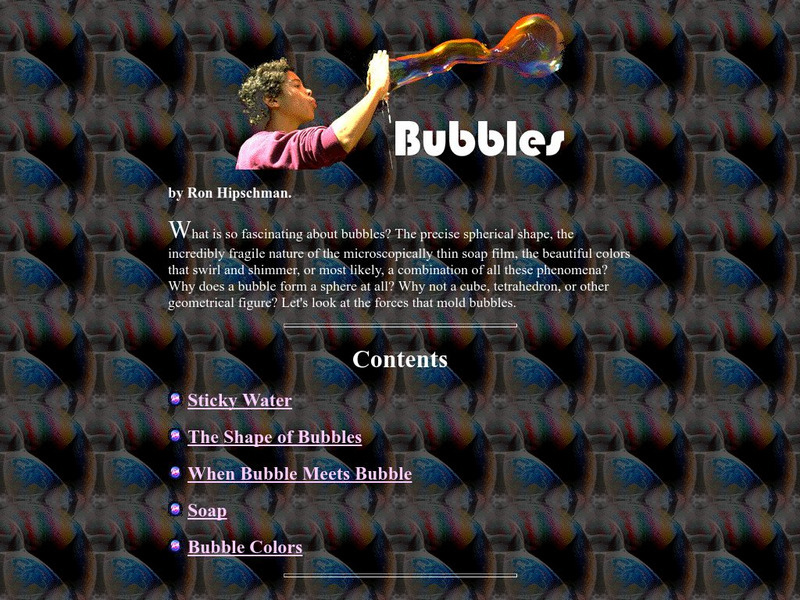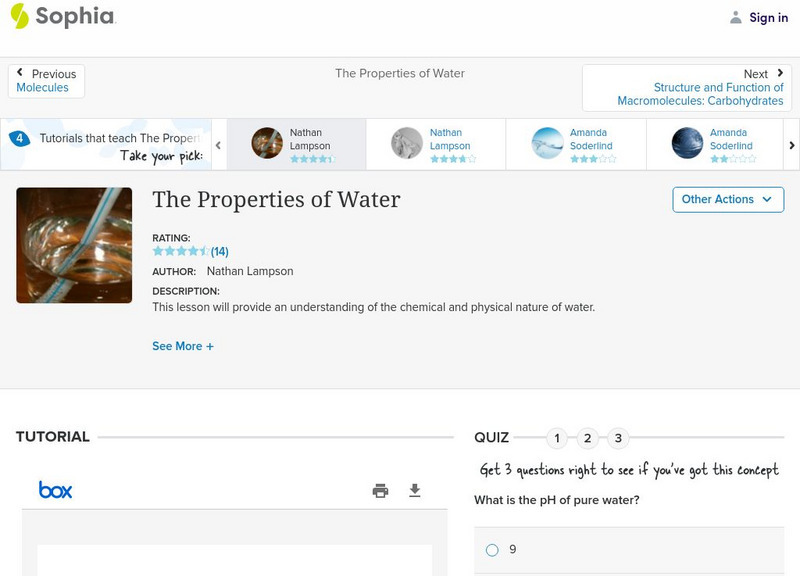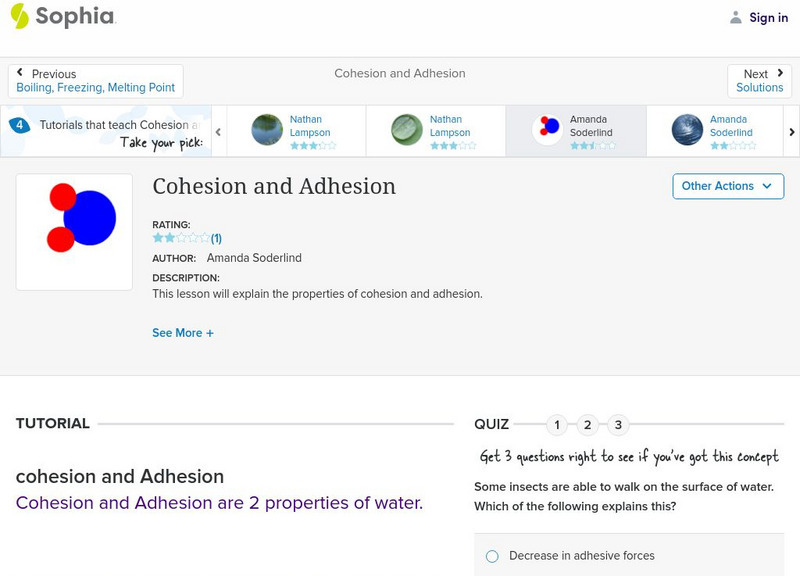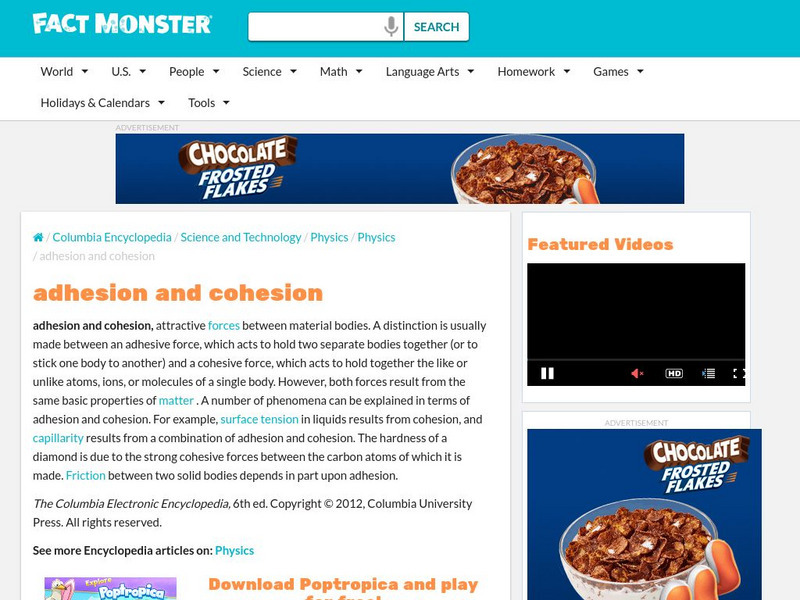Science Buddies
Science Buddies: Bubble Ology
Making your own bubble solution is fun, but sometimes the bubbles don't seem to work as well as the solutions you buy in the store. In this experiment you can test if adding corn syrup or glycerin to your bubble solution will make it...
American Chemical Society
Middle School Chemistry: Chapter 5: The Water Molecule and Dissolving
Nine exemplary chemistry lessons about the water molecule and dissolving complete with handouts and animations.
Vision Learning
Visionlearning: Physical States and Properties: Water: Properties and Behavior
Information relating to the properties of water and its behavior.
CK-12 Foundation
Ck 12: Water Properties
[Free Registration/Login may be required to access all resource tools.] In the following online tutorial students will describe the structure and polarity of a water molecule. They will also describe the hydrogen bonding that occurs in...
CK-12 Foundation
Ck 12: Properties of Water
[Free Registration/Login may be required to access all resource tools.] In this learning module, students will investigate the chemical and physical properties of the unique and important substance, water.
TeachEngineering
Teach Engineering: Exploring Capillary Action
Students observe multiple examples of capillary action. First they observe the shape of a glass-water meniscus and explain its shape in terms of the adhesive attraction of the water to the glass. Then they study capillary tubes and...
TeachEngineering
Teach Engineering: Magic Magnetic Fluid
Students are introduced to a unique fluid--ferrofluids--the shape of which can be influenced by magnetic fields. This activity supplements traditional magnetism activities and offers comparisons between large-scale materials and...
TeachEngineering
Teach Engineering: Get Your Charge Away From Me!
This activity is an easy way to demonstrate the fundamental properties of polar and non-polar molecules (such as water and oil), how they interact, and the affect surfactants (such as soap) have on their interactions. Students see the...
TeachEngineering
Teach Engineering: Let's Get Dirty
In a very hands-on activity, students observe and feel the differences between two cleaning methods, with and without hand soap, using coffee grounds to represent "dirt."Most of the dirt and bacteria on our hands is encased in a thin...
National Institute of Standards and Technology (NIST)
Thermophysical Properties of Fluid Systems
At this site, the student can find out thermophysical properties of different fluids and gases.
Texas Education Agency
Texas Gateway: Fluid Statics: Glossary
This is a glossary of terms and definitions used in Chapter 11: Fluid Statics from the AP Physics online text.
Texas Education Agency
Texas Gateway: Ap Physics: Fluid Statics: Summary
This page provides a summary of each section of Chapter 11: Fluid Statics from the AP Physics online text.
Science Bob Pflugfelder
Science Bob: Build a Soap Powered Model Boat
Science Bob presents instructions for a science demonstration of how to build a soap-powered model boat using common supplies with information on how it works.
Fundación Cientec
Cientec: Quimica
Simple step by step experiments that will allow students to venture in the world of Chemistry. Students can explore transformations of matter and interactions among its components, such as oxidation, surface tension, solutions and more.
Stanford University
Stanford University: Pour It Out
Students learn how material properties change as the size of the material decreases to the nanoscale. This lesson plan investigates the effects of forces at different scales.
Exploratorium
Exploratorium: Soap Bubbles
A scientific look at soap bubbles. Find out what it is about soap and water that allows bubbles to occur, how bubbles stick to each other, and why they are always a sphere. There are even formulae for making your own bubble solution.
CK-12 Foundation
Ck 12: Properties of Water
[Free Registration/Login may be required to access all resource tools.] Students look at the chemical structure of water and learn how it determines water's properties.
Frostburg State University
General Chemistry Online: Liquids Faq
Get the answers to many common questions about liquids. Identify properties and phase transitions of liquid shared in this FAQ.
Exploratorium
Exploratorium: Adhesion
Adhesion is defined and an example is given. Adhesion is distinguished from cohesion. Examples of cohesion are stated as well. Links to pages with further information are provided.
Sophia Learning
Sophia: The Properties of Water: Lesson 4
This lesson will provide an understanding of the chemical and physical nature of water. It is 4 of 4 in the series titled "The Properties of Water."
Sophia Learning
Sophia: The Properties of Water: Lesson 1
This lesson will provide an understanding of the chemical and physical nature of water. It is 1 of 4 in the series titled "The Properties of Water."
Sophia Learning
Sophia: Cohesion and Adhesion: Lesson 2
This lesson will explain the properties of cohesion and adhesion. It is 2 of 4 in the series titled "Cohesion and Adhesion."
Sophia Learning
Sophia: Cohesion and Adhesion: Lesson 3
This lesson will explain the properties of cohesion and adhesion. It is 3 of 4 in the series titled "Cohesion and Adhesion."
Fact Monster
Fact Monster: Adhesion and Cohesion
The forces of adhesion and cohesion are compared and contrasted. Various phenomena which can be explained by such forces are identified and discussed.
Other popular searches
- Water Surface Tension
- High Surface Tension
- Surface Tension of Water
- Penny Water Surface Tension
- Surface Tension and Cohesion
- Surface Tension Soap Boat
- Surface Tension Labs
- Science Surface Tension
- Surface Tension Soap
- Surface Tension and Dome
- Surface Tension of Liquids
- Surface Tension Experiment
